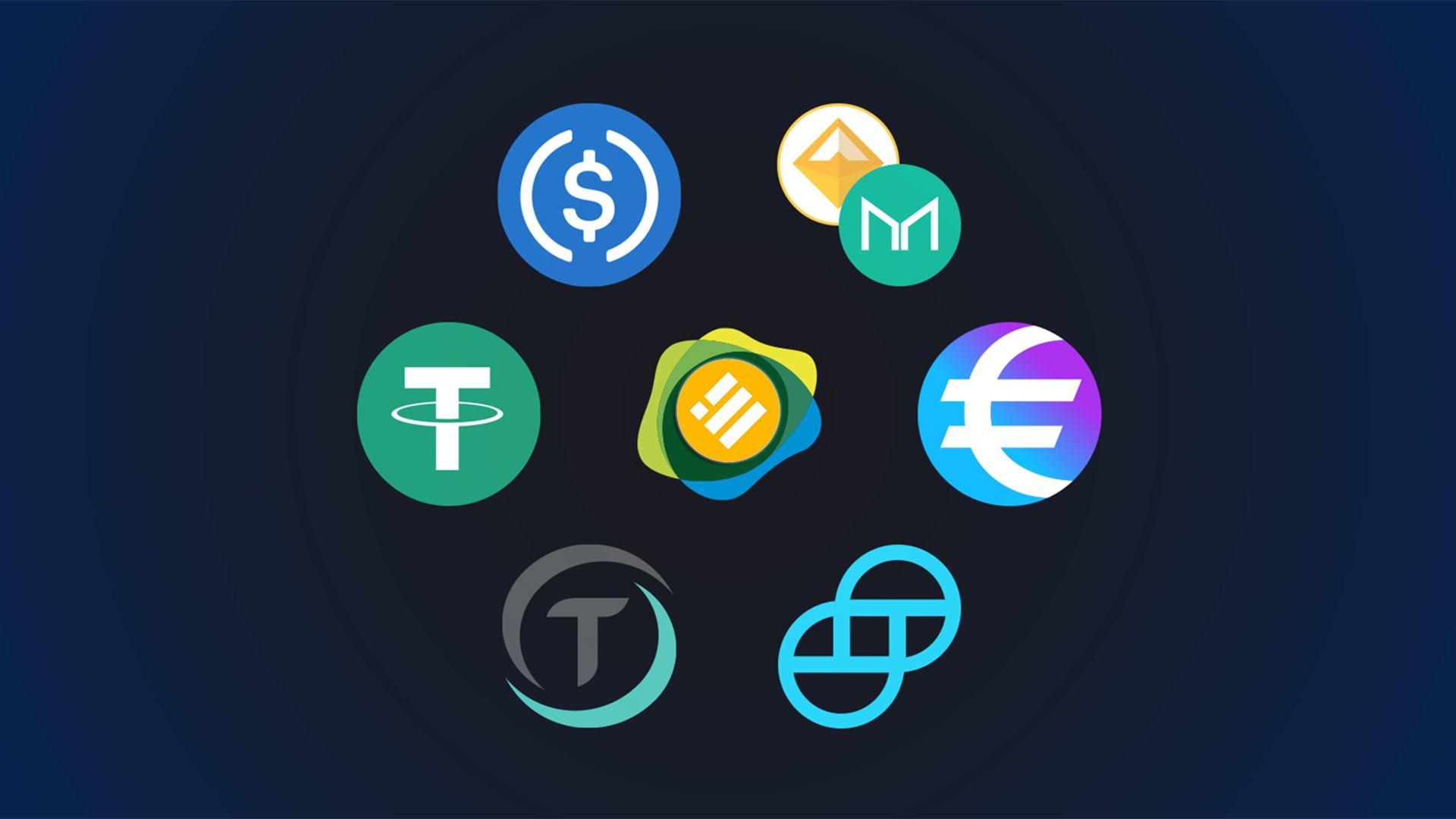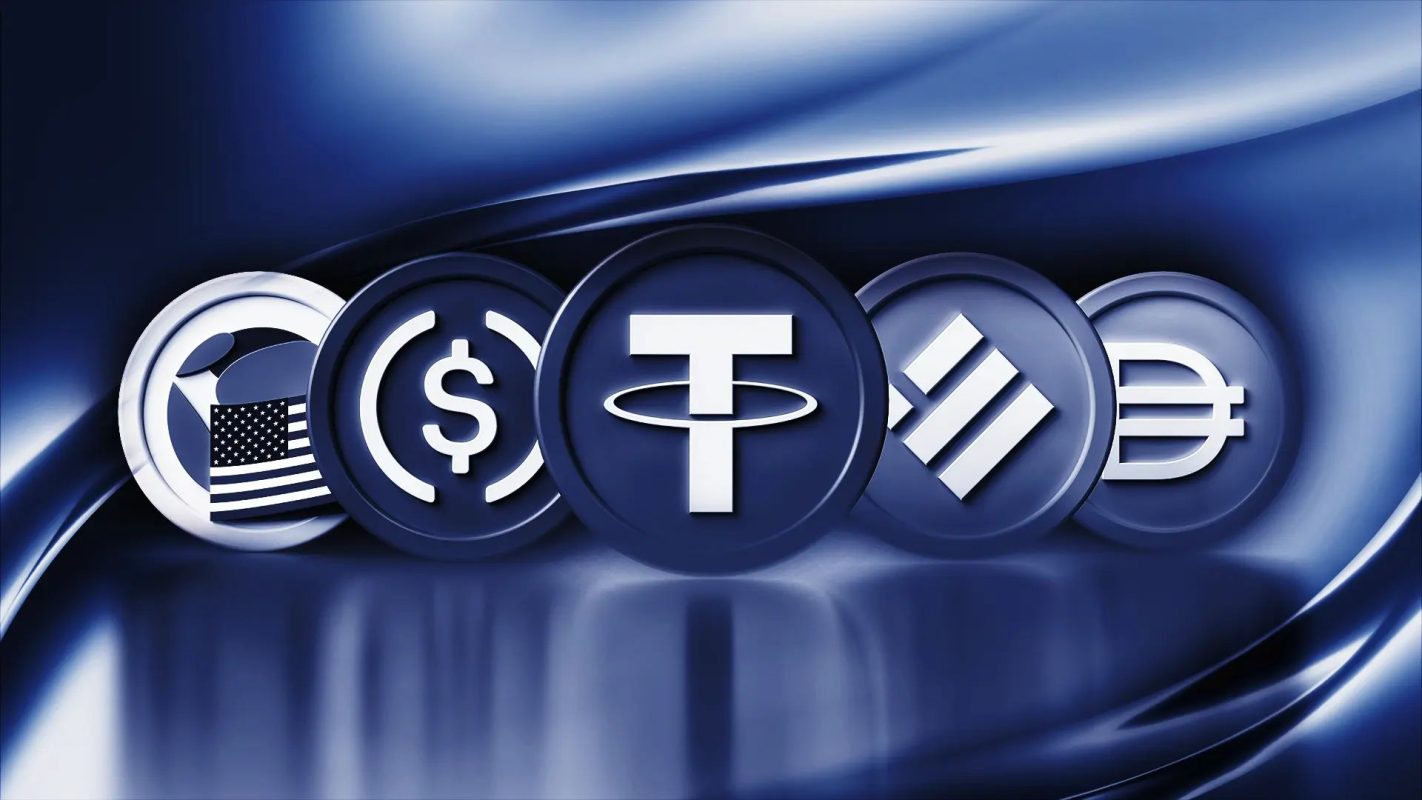Understanding the Differences Between Algorithmic vs Collateralized Stablecoins

The realm of digital currencies has evolved significantly, giving rise to various forms that serve distinct purposes within financial ecosystems. As innovations continue to flourish, the mechanisms behind these currencies showcase unique pathways to maintaining value stability. While some rely on specific assets to back their worth, others utilize sophisticated mathematical formulas to achieve equilibrium, each presenting a compelling case for users and investors alike.
This article delves into two notable categories, highlighting their operational frameworks and what sets them apart. By examining each approach, readers will gain insight into the strengths and limitations inherent in these financial instruments. As the market expands, understanding these distinctions can aid stakeholders in making informed decisions based on their individual needs and preferences.
Ultimately, the choice between these two types of digital currencies hinges on a mix of personal objectives and risk appetites. With evolving technologies enhancing transparency and efficiency, the exploration of these alternatives offers promising avenues for future financial innovation and inclusion.
Defining Algorithmic Stablecoins
This section delves into a unique category of digital assets that rely solely on automated mechanisms for maintaining their price stability. Unlike conventional forms of digital currency, which are pegged to tangible assets or traditional currencies, these innovative financial instruments utilize complex algorithms to regulate their supply and demand. This approach allows them to dynamically adjust their circulation in response to market fluctuations, thus aiming to sustain a consistent value over time.
The fundamental premise relies on mechanisms that can issue or retract tokens based on market activity. When the price exceeds a specific threshold, additional tokens are generated and introduced into circulation to lower the value. Conversely, if the price drops below a target range, tokens are removed from circulation to foster increased scarcity. This self-regulating system offers a compelling alternative for users seeking stability without the backing of physical reserves.

Through this model, these assets aspire to provide a decentralized solution that minimizes reliance on traditional finance structures while fostering trust and transparency within the digital ecosystem. The constant feedback loop of supply adjustments aims to create a balanced environment for traders and investors, encouraging broader adoption and usage.
Characteristics of Collateralized Stablecoins
Various digital assets are designed to maintain a stable value, providing users and investors with reliability in a highly volatile environment. These particular tokens are supported by other assets, forming a foundation that ensures their price remains relatively constant. Here, we explore several fundamental attributes that define these types of financial instruments.
Backing Mechanism
The stability of these tokens largely hinges on the presence of underlying assets. These assets can include cryptocurrencies, fiat currencies, or commodities. The backing mechanism provides a layer of security, assuring users that the token maintains its value through the following:
- Transparency in reserves, allowing users to verify the presence of backing assets.
- A redemption process that permits users to exchange tokens for the underlying assets at a stable ratio.
- Regular audits conducted by independent firms to ensure compliance and trustworthiness.
Price Stability Strategies
These tokens implement various strategies to uphold their value in fluctuating markets. Among the methods employed are:
- Dynamic collateralization, where the amount of backing is adjusted according to market conditions.
- Using smart contracts to automate and manage reserves effectively.
- Incorporating incentives for users to hold or use the tokens during periods of volatility.
Overall, these attributes contribute to the confidence users can have in utilizing such assets, making them an attractive option for those seeking stability amidst market unpredictability.
Mechanisms Behind Algorithmic Stability
The emergence of digital currencies has prompted the development of innovative systems aimed at maintaining price consistency. These systems utilize complex algorithms that dynamically adjust supply in response to market fluctuations. The underlying premise revolves around maintaining a stable value, allowing for a predictable medium of exchange and store of value, even amidst volatile conditions.
Supply Adjustment Techniques
Central to these systems is the concept of supply modulation, which is achieved through various methodologies. When the value deviates from the target, the mechanism activates to either increase or decrease the available quantity of the digital asset. This self-regulating nature fosters a balance that minimizes excessive price variability.
| Condition | Action Taken |
|---|---|
| Price Above Target | Increase Supply |
| Price Below Target | Decrease Supply |
Value Anchoring Strategies
In addition to altering supply, these systems often incorporate various anchoring techniques to maintain price stability. This may involve establishing a reference point based on another currency or asset, creating a reliable link that reinforces perception among users. Through these strategies, the system aims to build trust and encourage adoption in a market frequently characterized by unpredictability.
Benefits of Collateralized Models
Assets backed by real-world collateral provide a sense of security and stability in the financial ecosystem. These structures offer numerous positive aspects that appeal to various types of investors and users. Their reliance on tangible assets fosters trust and maintains value over time, distinguishing them in a rapidly evolving market.

One of the primary advantages is the ability to maintain a steady value through pegging to physical assets. This approach minimizes volatility, making it attractive for users looking for reliability in their transactions. Additionally, these mechanisms often incorporate transparent processes, which help to build user confidence and enhance market participation.
| Benefit | Description |
|---|---|
| Stability | Reduced price fluctuations due to asset backing ensures a more predictable value. |
| Transparency | Clear protocols and collateral management build trust among users. |
| Liquidity | Access to convertible assets promotes quick transactions and ease of exchange. |
| Security | Real-world assets provide a safeguard against total loss and enhance user confidence. |
Moreover, these systems often come with mechanisms to facilitate easy audits, further enhancing the credibility of the model. This combination of stability, transparency, liquidity, and security positions these frameworks as solid choices for both individual users and institutional investors alike.
Risks Associated with Algorithmic Approaches
The implementation of non-collateralized models in digital currency systems introduces a variety of vulnerabilities that may compromise their stability and usability. Understanding these threats is crucial for participants in the financial ecosystem, as they can significantly impact the adoption and trust in these innovative monetary alternatives.
One primary concern is the inherent volatility tied to market dynamics. Non-backed currencies are often subject to dramatic fluctuations in value, which can deter users who seek a dependable medium of exchange. Additionally, the mechanisms designed to maintain price stability may struggle under extreme market conditions, resulting in swift losses of value.
Another crucial risk involves the complexities of governance. Many of these systems rely on algorithmic protocols that adjust supply based on demand signals. If these protocols fail to implement necessary changes promptly, it could lead to severe dislocations in price and user confidence. Moreover, the lack of a centralized authority may complicate decision-making processes during critical moments, resulting in delayed or ineffective responses.
| Risk Type | Description | Potential Impact
|
|---|---|---|
| Market Volatility | Fluctuations in value due to supply-demand dynamics | Loss of user trust, decreased adoption |
| Governance Challenges | Complex decision-making processes without a central authority | Delayed responses, ineffective adjustments |
| Systemic Risks | Vulnerability to external economic shocks | Sudden loss of stability, crippling of the system |
| Technical Vulnerabilities | Potential exploits within the algorithm or platform | Loss of funds, compromised integrity |
In conclusion, while non-collateralized models present innovative features, they also expose participants to a myriad of risks. A thorough assessment and proactive measures are essential for mitigating these threats and fostering long-term trust and usability in these emerging financial systems.
Future Trends in Stablecoin Development
The evolution of digital currencies is at a pivotal moment, with innovative mechanisms driving the next generation of currency solutions. As these financial instruments mature, several trends are likely to shape their development in the coming years.
- Enhanced Regulatory Frameworks: Increased scrutiny from regulators will likely lead to clearer guidelines, fostering a safer environment for users and developers alike.
- Interoperability: As the ecosystem expands, the ability for different monetary systems to work seamlessly together will become crucial, promoting user engagement and simplifying transactions.
- Integration with Traditional Finance: The lines between digital assets and conventional banking will continue to blur, with partnerships and technological advancements facilitating smoother transitions between the two realms.
- Technological Innovations: Advancements in blockchain technology, such as layer 2 solutions and decentralized finance applications, will enhance scalability and efficiency.
- Increased Adoption in Emerging Markets: Developing regions will likely see a surge in usage, driven by the need for stable monetary options and access to financial services.
- Focus on Sustainability: With growing concerns about environmental impact, solutions will increasingly prioritize eco-friendly practices, possibly leading to greener alternatives.
These trends highlight a trajectory towards greater security, efficiency, and integration, positioning future currency models to meet the demands of a rapidly evolving financial landscape.

Q&A: Algorithmic vs collateralized Stablecoins
What are the main differences between algorithmic and collateralized stablecoins?
Algorithmic stablecoins maintain their value through algorithms and smart contracts that adjust supply based on demand, while collateralized stablecoins are backed by tangible assets such as fiat currencies or cryptocurrency reserves. The former relies on market mechanisms to stabilize price, often resulting in more volatility, while the latter tends to be more stable since they are directly pegged to physical assets. However, collateralized stablecoins may face issues related to liquidity and trust in the underlying collateral.
What are some advantages of algorithmic stablecoins over collateralized stablecoins?
One key advantage of algorithmic stablecoins is their potential for greater scalability. Since they do not require backing by physical assets, they can more easily adapt to changes in market demand without the constraints of collateral. Additionally, algorithmic stablecoins can facilitate more dynamic monetary policy adjustments, potentially allowing for more responsive systems in a decentralized economy. This can make them attractive in scenarios where flexibility and responsiveness to market conditions are prioritized.
Are there any risks associated with using algorithmic stablecoins?
Yes, algorithmic stablecoins carry specific risks. They can be more susceptible to market manipulations and may suffer from price volatility, especially if the underlying algorithms are not robust enough to react to sudden changes in demand or supply. For instance, if a large number of users decide to sell an algorithmic stablecoin at once, it could lead to significant price drops. Additionally, since they operate on complex algorithms, there is a risk of coding errors or unforeseen market dynamics leading to failure in maintaining the peg.
How do collateralized stablecoins ensure their value is stable?
Collateralized stablecoins ensure their value stability by maintaining a reserve of assets, typically in a 1:1 ratio with the value of the stablecoin. For example, for every stablecoin issued, there is an equivalent amount of fiat currency or cryptocurrency held in reserve. This backing provides a sense of security and trust among users, as they can redeem their stablecoins for the underlying asset at any time. Moreover, smart contracts often lock collateral to prevent it from being used for other purposes, further ensuring the stablecoin’s stability.
Which type of stablecoin is more widely accepted and used in the market currently?
As of now, collateralized stablecoins are more widely accepted and used in the cryptocurrency market. Examples include USDC, Tether (USDT), and DAI, which have gained significant traction due to their perceived stability and reliability. Many users and businesses prefer collateralized stablecoins for transactions and as a safe harbor during market volatility. However, algorithmic stablecoins, like Ampleforth and Terra’s original model, are also making strides and attracting attention, particularly for their innovative approaches to stabilization, though they are often viewed with caution due to higher associated risks.
What are the main differences between algorithmic and collateralized stablecoins?
Algorithmic and collateralized stablecoins are two distinct categories of digital assets designed to maintain price stability. The primary difference lies in their underlying mechanisms. Collateralized stablecoins are backed by a reserve of assets, which can include fiat currencies, cryptocurrencies, or commodities. For instance, Tether (USDT) is pegged to the US dollar and is backed by a reserve of dollar-equivalent assets, ensuring that each stablecoin is redeemable at a 1:1 ratio with the underlying asset. In contrast, algorithmic stablecoins operate on a supply-demand model and do not rely on collateral. They adjust their supply based on market conditions to maintain their peg—similar to how central banks manage national currency supply. Thus, while collateralized stablecoins provide a more stable and secure asset backed by a tangible reserve, algorithmic stablecoins offer flexibility and innovative approaches to price stability.
What are the advantages of using algorithmic stablecoins over collateralized ones?
Algorithmic stablecoins come with several advantages that make them attractive alternatives to collateralized stablecoins. Firstly, they typically do not require collateral, which means users can avoid the issues of collateral volatility and liquidity constraints. This allows for greater accessibility and may encourage broader adoption, as users do not need to own or manage assets that are often volatile and subject to market fluctuations. Secondly, algorithmic stablecoins can respond dynamically to market conditions, altering their supply to maintain price stability. This agility can make them more resilient against market shocks compared to collateralized models. Additionally, since they are less reliant on collateral, they can promote a decentralized financial (DeFi) ecosystem, reducing the risk of centralization that can occur with asset-backed models. However, it’s also crucial to note that algorithmic stablecoins face unique risks related to their reliance on market mechanisms, which can lead to instability during times of extreme volatility.
How do fiat-collateralized stablecoins work, and what makes them unique?
Fiat-collateralized stablecoins are backed by reserves of traditional fiat currencies, such as USD or EUR, held in banks or financial institutions. These reserves ensure that each stablecoin is pegged to the value of the currency it represents, maintaining its peg and providing stability in the volatile crypto market.
What are the main types of stablecoins, and how do they differ?
The main types of stablecoins are fiat-collateralized stablecoins, crypto-collateralized stablecoins, commodity-backed stablecoins, and algorithmic stablecoins. Fiat-collateralized stablecoins are backed by traditional currencies, crypto-collateralized stablecoins are backed by other crypto assets, commodity-backed stablecoins are linked to assets like gold, and algorithmic stablecoins use mechanisms to maintain stability without direct collateral.
Why are stablecoins important in the crypto market?
Stablecoins play a crucial role in the crypto market by providing a stable medium of exchange and a store of value. They aim to maintain a stable price, making them ideal for transactions, trading, and hedging against price falls in volatile cryptocurrencies.
How do algorithmic stablecoins aim to maintain their peg without collateral?
Algorithmic stablecoins use supply and demand mechanisms to maintain their peg. When the price of the stablecoin rises above its target value, the system increases supply. Conversely, if the price falls below the target, the supply is reduced. These adjustments aim to stabilize the price without relying on collateralized assets.
What are the risks associated with algorithmic stablecoins compared to collateralized stablecoins?
Algorithmic stablecoins face risks due to their reliance on mechanisms to maintain stability, which can fail during market turbulence. Unlike fiat-collateralized or crypto-collateralized stablecoins, they lack tangible reserves, making them more vulnerable to price volatility and loss of market confidence.


